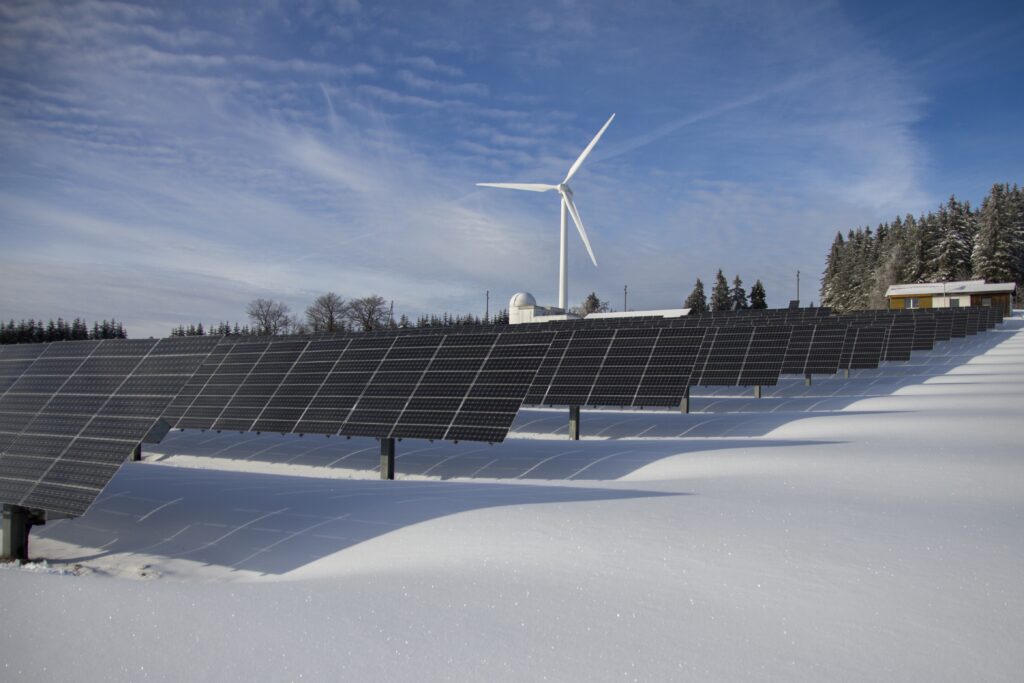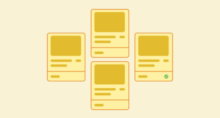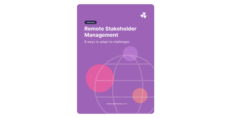How Renewable Energy Project Managers Can Engage Stakeholders

Whether you’re in solar energy, hydroelectricity, or wind power — stakeholder engagement is nearly always going to be part of your role as a renewable energy project manager. That’s because engaging with the right stakeholders at the right time will be critical to your project’s success.
What most people don’t realize is that stakeholder engagement can be one of the hardest parts of the job. So, we wanted to offer a few ideas and tips that might help renewable energy project managers successfully engage with stakeholders.
But first… let’s establish why engaging with stakeholders is just so important to your project.
Why Renewable Energy Project Managers Should Engage Stakeholders
Stakeholder engagement involves identifying your stakeholders — these are the people, groups, and organizations impacted by, interested in, or who have an influence on the project you’re managing. Then you can engage with them — through communication, activities, surveys, and other opportunities to participate.
Unlike stakeholder management, engagement is more than just managing people and groups for a particular outcome. Engagement is focused on getting their involvement, participation, or input, because your stakeholders’ contributions can increase your knowledge and improve the project outcomes.
This process is essential for renewable energy projects because it can help you increase social acceptance for your organization and project — and even allow you to attain or sustain your social license to operate. Engaging with stakeholders can help you manage stakeholder expectations and identify and manage risks. Plus, stakeholder engagement can help you ensure your project is truly sustainable.
For more info on what you can achieve through stakeholder engagement, take a look at these 10 stakeholder engagement objectives.
Easier Said Than Done, Though…
Even if you already knew that stakeholder engagement mattered to your role as a renewable energy project manager… you might not be ticking all the boxes (yet). Engaging with stakeholders is much easier said than done, especially when you’re under a lot of pressure to deliver your project on time and ensure it’s a success (with limited resources to make it all happen).
But of course, stakeholder engagement is part of ensuring you meet your milestones and minimize the risk of failure. So, it’s well worth investing whatever time and resources you can into getting it right.
Fortunately, we’ve worked with a lot of companies in the renewable energy space and know what works and how to operate as efficiently as possible.
10 Ways Renewable Energy PMs Can Engage Stakeholders

1. Start With Foundations
Don’t be tempted to jump into your engagement activities too quickly. It might sound counterintuitive, but going slow and strategic in the beginning will allow you to be much more efficient later on in the engagement process. Foundational processes for stakeholder engagement include stakeholder identification, stakeholder analysis, and stakeholder mapping. Essentially — you need to figure out who your stakeholders are, what they think, and any other relevant preferences and characteristics. This will lead nicely into what’s next…
2. Group Your Stakeholders
After analyzing and mapping your stakeholders, you can organize them into groups. This will allow you to prioritize key stakeholders and engage with each group in a way that’s more effective. You can ensure you only communicate about relevant issues and use engagement methods that are best suited to each group.
In renewable energy, you might want to group stakeholders based on their proximity to the project, their level of acceptance, or based on your commitments or obligations to provide updates. From there, you can formulate a stakeholder engagement plan that maps out your engagement goals and what methods you’ll use to achieve them. And these days, there are a lot of engagement methods and activities you can choose from (as you’ll see below).
3. Door Knocking
Face-to-face is still relevant as an engagement method in 2023, especially for renewable energy project managers. In many communities, the best way to identify and engage with your stakeholders in the local area will be to go door knocking. This will allow you to introduce yourself and your project, exchange contact information, share project materials, and connect stakeholders to other ways to stay in touch (like events or mailing lists).
4. Mail
Letterbox drops are another traditional engagement method that many renewable energy project managers rely on. In many cases, you’ll already know the address of locally impacted stakeholders for your project, so you can accurately target them with a mail campaign. This might include a letter to introduce yourself and the project, invitations to events, and information on how to get in touch or provide feedback.
5. Town Hall Meeting or Event
A town hall meeting doesn’t have to occur at the local community hall, but it often does! Essentially, the purpose of this event is to provide an opportunity for stakeholders to gather together at the same place and time to access information on the project, meet with company representatives, ask questions, and share comments. This can help to build trust and increase transparency, and help bring the community together (which is great for social capital and may even help to build consensus on issues). Some occasions that might call for a town hall meeting include:
- Early on in the project
- Key project milestones
- Regular intervals
- If/when a new issue emerges that triggers a lot of questions or discussions
You might also engage stakeholders through less formal events or simply show up at local community gatherings, markets, and other events.
6. Meetings
Meetings are another common way renewable energy PMs can engage with stakeholders. It’s not always practical to meet with every stakeholder individually, but you might choose to meet one-on-one with key stakeholders or those that are more likely to impact your project.
7. Online Platforms
Online platforms are an increasingly popular stakeholder engagement tool. Engagement platforms can be used to:
- Create newsletter sign ups
- Create SMS notification forms
- Share key project information
- Post news updates
- Link to feedback forms
- Share contact information
If you have a large number of stakeholders to engage with and keep updated in order to meet your obligations, this can be a great strategy.
8. Email
Email is typically used to deliver project updates on a regular basis (e.g. monthly) or at key milestones. You might also send out invitations to participate in surveys or events. When sending email campaigns, it’s a good idea to split your contacts into lists so that you can tailor your communication to different stakeholder groups.
9. SMS
SMS notifications are being used in an increasing number of renewable energy projects. This format is ideal for short-form messages and timely updates. Let’s say your stakeholders were likely to experience a disruption due to noise, loss of power, or something else. You could send a quick SMS notification ahead of time — and keep them updated if anything changes.
Once you have stakeholders signed up for SMS updates, there’s so much more you can do with this platform. For example, one of Simply Stakeholders’ renewable energy customers is using SMS to send out expressions of interest for local jobs, and to send links to feedback forms to find out more about how the community is being impacted by the project.
10. Stakeholder Software
It’s not necessarily an engagement method, but stakeholder engagement software is an important tool in the toolkit for a busy renewable energy project manager. Simply Stakeholders offers a range of useful features, including:
- Stakeholder record keeping
- Stakeholder analysis and mapping
- Email integrations
- Issues and sentiment tracking
- Reporting and analytics
If you’d like to find out more about how Simply Stakeholders can support your engagement, learn more about how it works or reach out to our team.
Learn More

Interested in learning more about how to support your project and stakeholders? Check out our other related content:




























